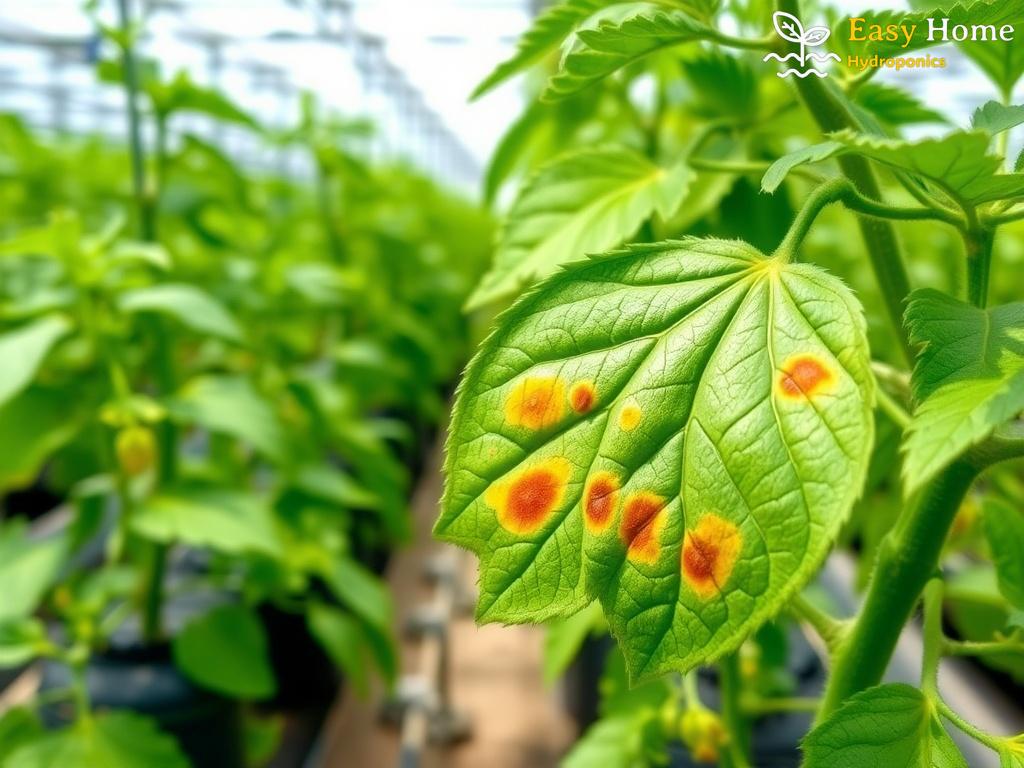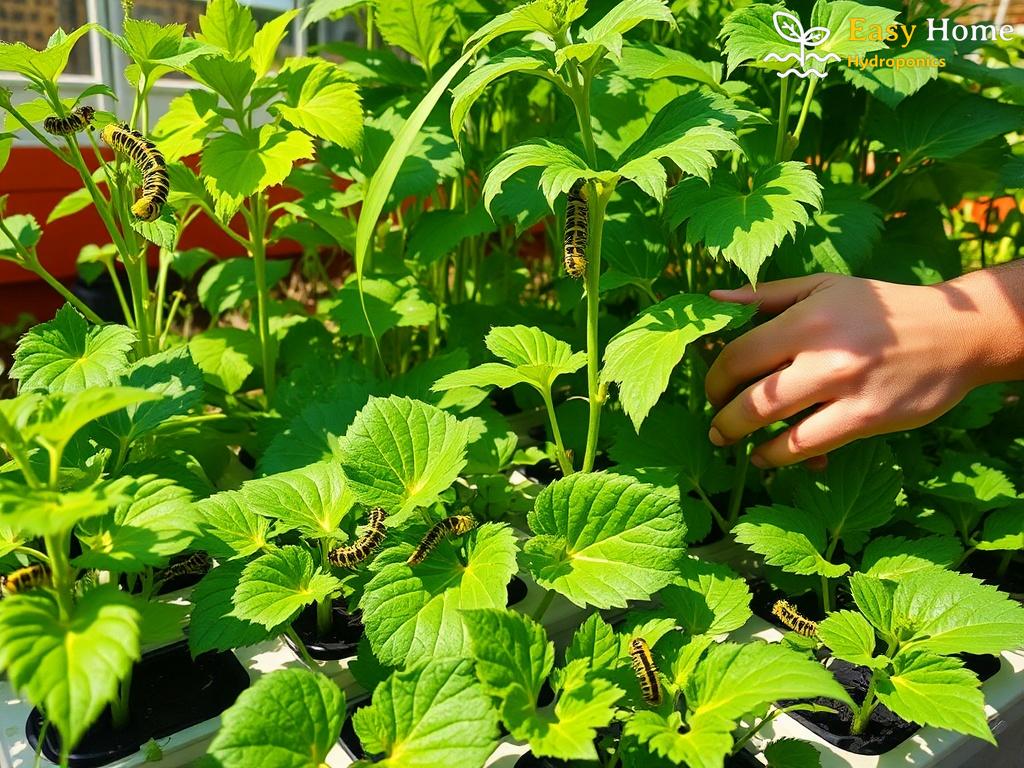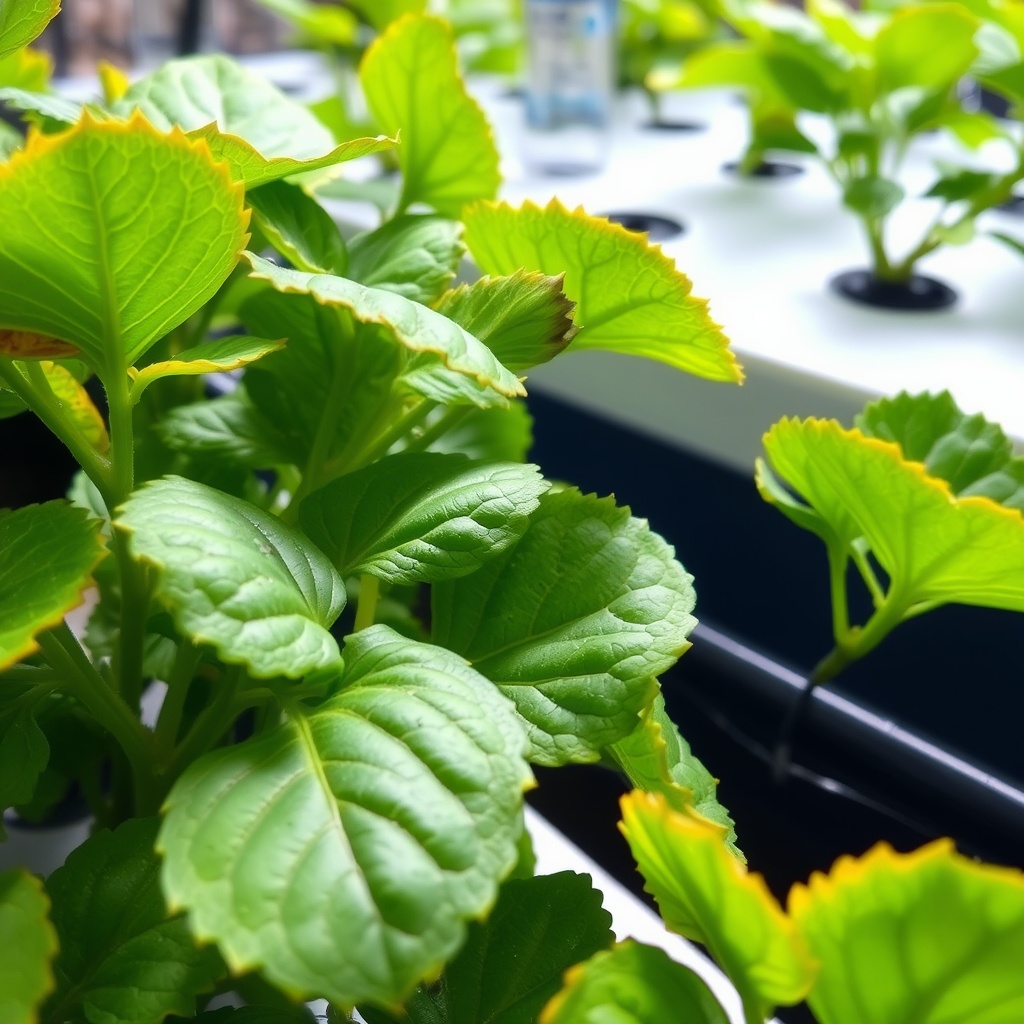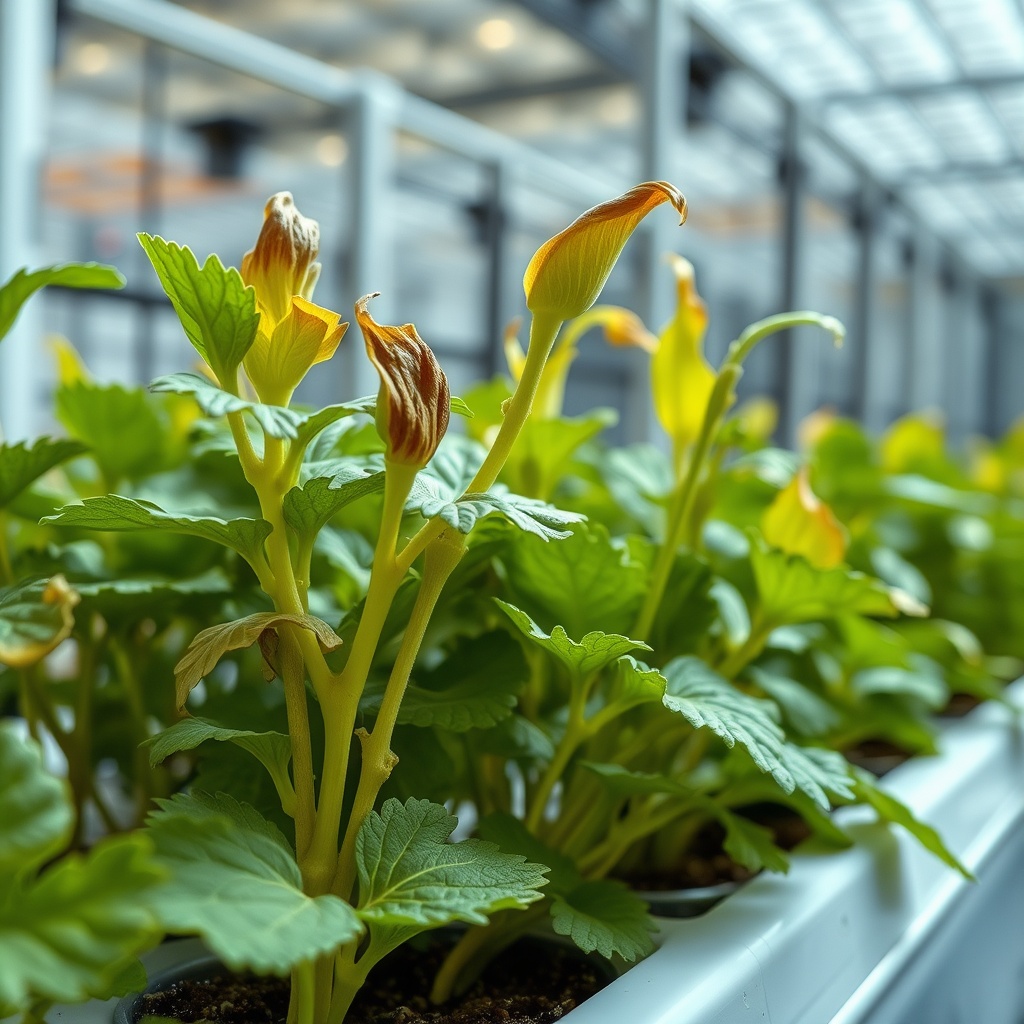Identifying Leaf Septoria: Signs to Watch For
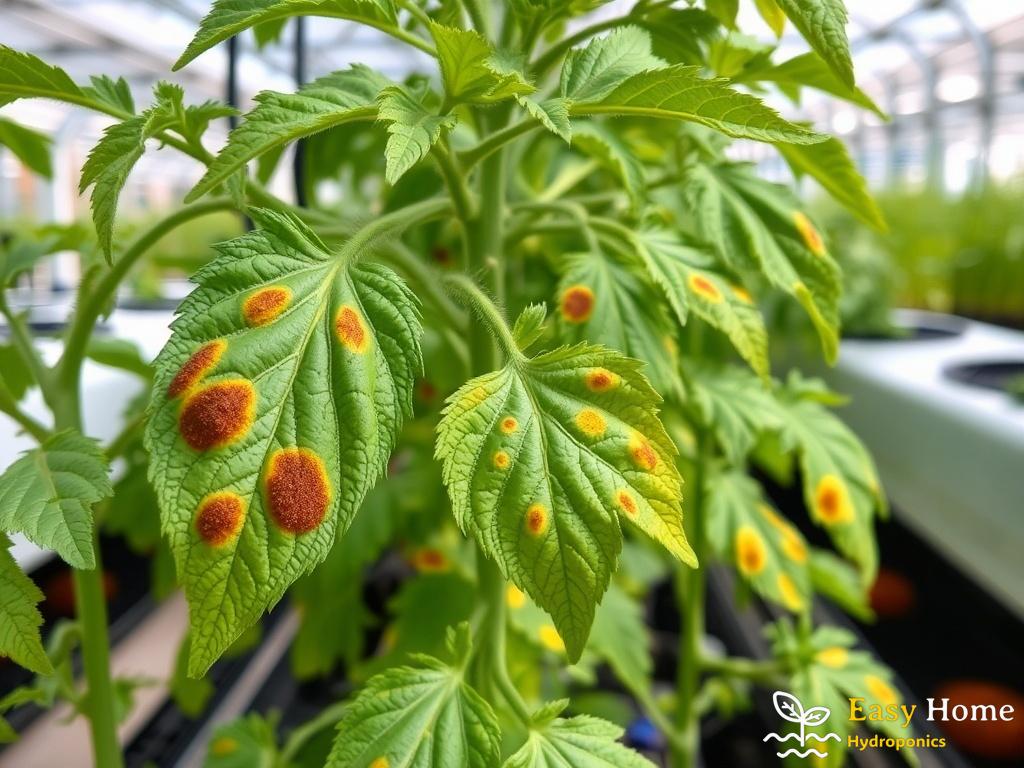
Leaf Septoria, a villain lurking in the shadows of hydroponic tomato farms, can wreak havoc if not identified early. Understanding its signs is crucial for growers who wish to maintain healthy crops and high yields. Without keen observation, this fungal disease can spread rapidly, resulting in significant losses. So, what should you be on the lookout for?
One of the most effective ways to detect Leaf Septoria is through its distinct visual symptoms. Growers need to familiarize themselves with these signs to catch the disease before it takes over.
- Small, Dark Spots: The disease begins with tiny, dark brown to black spots on the leaves that can be easily overlooked.
- Yellowing Leaves: As the disease progresses, you may notice a yellow halo surrounding the spots, indicating that the leaf tissue is dying.
- Leaf Drop: Infected leaves may eventually turn brown and fall off, reducing the plant’s ability to photosynthesize.
Understanding how Leaf Septoria differs from similar diseases can empower growers. While many tomato diseases share symptoms, knowing their unique characteristics can aid in accurate diagnosis.
| Disease | Symptoms | Distinctive Features |
|---|---|---|
| Leaf Septoria | Dark spots, yellowing, leaf drop | Spots with a yellow halo |
| Powdery Mildew | White, powdery growth on leaves | Visible fungal growth on the surface |
| Blossom End Rot | Dark, sunken spots on fruit | Affects fruit, not leaves |
By being vigilant and well-informed, hydroponic tomato growers can effectively combat Leaf Septoria. Keeping an eye out for these symptoms and understanding how they compare to other diseases will help ensure that your tomato plants thrive.
Causes of Leaf Septoria: What Triggers the Disease?
To effectively combat Leaf Septoria in hydroponic tomatoes, it’s essential to grasp the underlying causes that trigger this relentless disease. Many growers may be surprised to learn that environmental factors, cultural practices, and even the plant’s own vulnerabilities can contribute to the onset of this fungal menace. By identifying these causes, tomato cultivators can take proactive measures to safeguard their crops.
Leaf Septoria thrives in specific environmental conditions that create a perfect storm for its development. High humidity is one of the primary culprits, as moisture on the leaves facilitates fungal growth. Additionally, warm temperatures, particularly between 20°C to 30°C (68°F to 86°F), provide an ideal climate for the disease to flourish. Growers must keep a vigilant eye on these factors, as fluctuations in humidity and temperature can create a breeding ground for the pathogen.
Another critical factor in the emergence of Leaf Septoria lies in the cultural practices adopted by tomato growers. Poor air circulation and overcrowded plants can lead to higher moisture retention, creating a favorable environment for fungal infections. Furthermore, inadequate sanitation and the use of contaminated tools during pruning or harvesting can inadvertently introduce the pathogen to healthy plants. It is imperative for growers to implement rigorous hygiene protocols and ensure proper spacing between plants to enhance airflow.
Moreover, choosing resistant tomato varieties can significantly reduce the risk of Leaf Septoria. By understanding the unique characteristics of different strains, growers can select those less susceptible to this disease, ultimately promoting a healthier crop.
In conclusion, recognizing the multifaceted causes of Leaf Septoria is a vital step in managing this disease effectively. By maintaining optimal environmental conditions and adopting sound cultural practices, hydroponic tomato growers can significantly mitigate the risk of infection and protect their precious yields.
Effective Prevention Strategies for Healthy Hydroponic Tomatoes
When it comes to nurturing hydroponic tomatoes, the last thing any grower wants is to encounter the dreaded Leaf Septoria. This fungal foe not only threatens the health of your plants but can also lead to decreased yields and wasted resources. Fortunately, with the right prevention strategies, you can fortify your crops against this insidious disease and ensure that your tomatoes thrive in a healthy environment. Here’s how to implement practical measures that promote resilience and productivity in your hydroponic setup.
Creating and sustaining the ideal environment for your hydroponic tomatoes is paramount in preventing Leaf Septoria. This involves closely monitoring temperature and humidity levels, as these factors play a critical role in the development of the disease. Keeping temperatures between 20°C to 25°C (68°F to 77°F) and ensuring humidity levels do not exceed 60% can drastically reduce the likelihood of fungal outbreaks. Regularly checking these parameters and making necessary adjustments can help you maintain a balanced ecosystem for your plants.
How you care for your hydroponic tomatoes can significantly impact their vulnerability to Leaf Septoria. Adopting meticulous cultural practices is essential for fostering a disease-resistant crop. Here are some effective tactics to consider:
- Ensure Adequate Spacing: Properly spacing your plants allows for better air circulation, reducing moisture retention on leaves and minimizing the risks of infection.
- Regular Pruning: Remove any dead or diseased foliage promptly to prevent the spread of pathogens. This habit not only keeps your plants healthy but also enhances light penetration.
- Hygiene First: Always sanitize tools and equipment before use. This simple step can prevent the transfer of fungal spores from one plant to another.
- Choose Resistant Varieties: By selecting tomato varieties that exhibit natural resistance to Leaf Septoria, growers can significantly lower the chances of their crops falling victim to the disease.
Being proactive is key. Regularly inspecting your plants for any signs of disease can make all the difference. If you catch the early symptoms of Leaf Septoria, such as small dark spots or yellowing leaves, take immediate action to isolate affected plants and adjust environmental conditions. Additionally, consider applying organic fungicides as a preventive measure. This combined approach not only protects your crops but also fosters a culture of vigilance and care within your hydroponic system.
By adopting these effective prevention strategies, you can safeguard your hydroponic tomatoes against Leaf Septoria, ensuring a bountiful harvest and a thriving garden. Remember, a little proactive care goes a long way in maintaining the health and productivity of your crops.
Treatment Options: Battling Leaf Septoria Head-On
Confronting Leaf Septoria requires a strategic approach, particularly when it comes to treatment options. One of the most effective methods involves the application of fungicides. These chemical solutions can significantly reduce the presence of the pathogen, especially when applied at the first signs of infection. Growers should opt for fungicides specifically designed to combat fungal diseases in tomatoes, ensuring they follow the manufacturer’s instructions meticulously. It is important to note that while these treatments can be potent, they must be used judiciously to avoid resistance development. Regular monitoring after application can help assess the effectiveness of the treatment and inform future actions.
For those seeking a more eco-friendly approach, organic fungicides present a promising alternative. Utilizing products based on natural ingredients can help manage Leaf Septoria without the risks associated with synthetic chemicals. Ingredients like bicarbonate of soda, neem oil, and copper-based solutions have shown effectiveness against fungal pathogens. These organic options not only protect the plants but also contribute to the overall health of the hydroponic system. Integrating these treatments into a holistic management plan fosters a sustainable growing environment while tackling the disease head-on.
While treatment options are essential, prevention remains the cornerstone of effective Leaf Septoria management. Growers are encouraged to implement a rigorous monitoring routine, regularly inspecting plants for early signs of infection. Coupled with good cultural practices, such as proper spacing and sanitation, these preventive measures can greatly diminish the risk of outbreak. Additionally, educating oneself about the specific conditions that favor the disease can empower growers to adjust their practices accordingly, creating an unwelcoming environment for Leaf Septoria. Remember, a proactive stance not only minimizes the need for treatments but also promotes long-term plant health and productivity.
Post-Infection Care: Restoring Your Tomato Plants
After the battle with Leaf Septoria, your hydroponic tomatoes may appear weary and distressed. However, with dedicated post-infection care, you can revive your plants and set them on the path to recovery. While the road may seem challenging, understanding the right steps to take will empower you to restore vigor to your crops and ensure a fruitful harvest.
Before diving into plant care, it’s essential to assess the overall health of your hydroponic system. A well-maintained environment is critical for the recovery of your tomato plants. Here are some vital considerations:
- Water Quality: Ensure that the nutrient solution is fresh and properly balanced, as contaminated or depleted solutions can hinder recovery.
- Temperature and Humidity: Monitor and adjust environmental conditions to prevent further stress on the plants. Aim for temperatures between 20°C to 25°C (68°F to 77°F) and maintain humidity levels below 60%.
- Sanitation Practices: Clean and disinfect your hydroponic system and tools to eliminate any lingering fungal spores that could compromise recovery efforts.
With the hydroponic system primed for recovery, it’s time to focus on your tomato plants. Implementing a targeted care regimen can make a significant difference in their revival:
- Prune Affected Areas: Remove any damaged or infected foliage to improve airflow and redirect the plant’s energy toward healthy growth.
- Fertilization: Introduce a balanced nutrient solution rich in vitamins and minerals to bolster recovery. Replenishing essential nutrients can stimulate new growth and strengthen the plant’s defenses.
- Monitor for Recurrence: Keep a vigilant eye on your plants for any signs of Leaf Septoria returning. Early detection is crucial in preventing another outbreak.
By following these steps, you can transform your beleaguered tomato plants into thriving specimens once again. Remember, patience and diligence are key in post-infection care. With time and proper attention, your hydroponic tomatoes will not only recover but also flourish, offering bountiful yields in the future.

